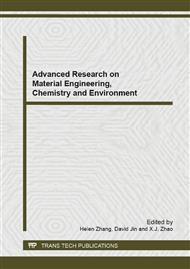p.422
p.428
p.434
p.440
p.444
p.450
p.456
p.460
p.466
ELISA Applied on Survey and Remediation of Dioxin Contaminated Site - A Case Study in Southern Taiwan
Abstract:
Once the pollution was found in a preliminary survey, the related information about the pollution site should be collected to confirm polluted range and quantity. Appropriate remediation technology is implemented until the pollution is completely remove. The more precise survey could lower the risk of uncertainty and improve the site remediation process. However, numerous of sampling and analysis should be done during whole process, including pollution survey, evaluation of remediation effectiveness, and verification after remediation. Time and budget needed for the remediation will be huge loads because of the widely range of site, and characteristics of the complicated pollutants, which may affect the remediation process. This study utilities Enzyme-Linked ImmunoSorbant Assay (ELISA) as the screening tool for dioxin pollutants by means of immuno-biological assay, which can complete the detailed investigation quickly and effectively, and also the pollution reclamation in a short time with the independent quality control. An appropriate screening method plays an important role for a successful and effective remediation.
Info:
Periodical:
Pages:
444-449
Citation:
Online since:
September 2013
Authors:
Price:
Сopyright:
© 2013 Trans Tech Publications Ltd. All Rights Reserved
Share:
Citation:


